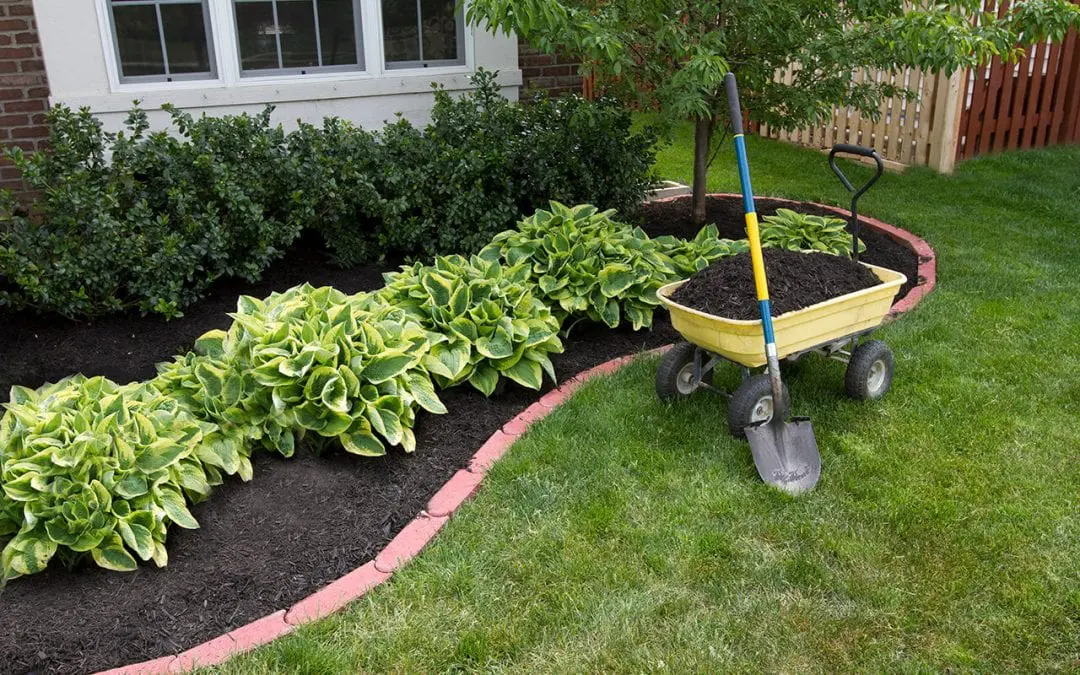Remove Winter Debris
Spring landscaping can begin as early as the last week of April or the first week of May or when most perennial growth begins to show. First, clean off your yard tools so they are in prime working condition for spring landscaping maintenance and replace any that are beyond repair.
Go to the local home improvement store and pick up enough lawn bags for leaves, branches, and dead plants. Pull up and trim away dead vegetation and rake up stray pinecones and leaves from the fall and winter.
Test and Aerate the Soil for Spring Landscaping
A common mix of additives for aeration is one part each of high-quality soil, perlite to reduce soil concentration, and peat moss. Aerate with a spading fork, tiller, or just by turning over the topsoil with a garden shovel.
There is also liquid aeration which produces longer-lasting effects on the soil and improvement over time. Spring is a good time of year to test the soil’s pH balance before fertilization to see what nutrients are present and how to adjust the mix of fertilizer additives before application.
Fertilizing the Lawn, Trees, and Shrubs
Fertilizing the lawn can be done as early as February if the winter was mild and late April after a cold winter season. Look for signs of the grass just beginning to turn green again. Most lawn care specialists would suggest a 20-5-10 mix of fertilizer for the spring. Also, the slow-release lawn fertilizers will discharge nutrients over an extended period, which reduces the total number of applications.
Preparing Flower Beds
Whether you are making a new flower bed or working with one that has been dormant over the winter months, there are some steps to take when doing spring landscaping in these areas:
• Make sure the area is moist but not soaked with water
• Using a garden shovel, turn over the soil to approximately 12” of topsoil
• Put in at least 2” of compost and turn the topsoil over again
• Cover the flower bed with at least a ½” to 1” deep layer of mulch
Mulch and Perennials
Before spring landscaping, you will begin to notice perennials peeking out from the soil. This is the time to add mulch around these plants, being careful not to cover the crowns of the plants. The mulch will help to keep the soil damp and cool the roots while deterring weeds from growing.
Adding a layer of mulch helps perennials to multiply each spring and aids in their overall growth. Avoid cutting perennials in the spring, including tree buds. They should be given enough time to green and bud before they are trimmed. Old stems also protect the plant from any late frost.
Spring Landscaping Weed Control
Depending upon how extensive weeds are in an outside area, there are different options for controlling them. If there are minimal weeds, pull them out of the ground easily after it rains. Be sure to remove them by the root with a tool called a fulcrum weeder or a crack weeder if the weeds are in heavier soil.
You can also opt for faster but less efficient weed control and prune the weeds. This means cutting off the top of it only. If the weeds are out of control each spring, then a post-emergent herbicide for the entire area is the best alternative for weed control. This can be applied as a spray using a garden hose and reapplied every 6 to 8 weeks.
Anderson Home Inspections provides home inspection services to Central Ohio. Contact us to schedule an appointment.

